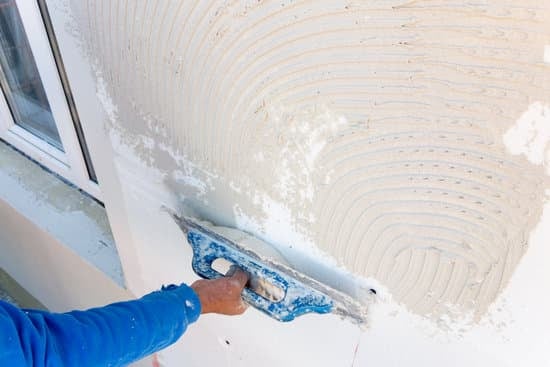Are you looking to learn how to improve your singing voice fast at home? Many people dream of becoming a better singer, but often struggle to find the time and resources for formal lessons. Fortunately, there are plenty of effective techniques you can practice in the comfort of your own home. In this article, we will explore various methods and exercises that can help you enhance your vocal abilities without leaving your house.
To begin with, we will delve into the significance of vocal warm-ups. Before any singing practice or performance, it is crucial to prepare your vocal cords through proper warm-up exercises. We will discuss the importance of warming up your voice and share some useful techniques that can help you get ready to sing with more ease and confidence.
Additionally, we will explore breathing techniques that play a significant role in improving your singing voice. Proper breathing is essential for better control, tone, and power in singing. We will provide valuable tips on how to develop better breath support for a more impressive vocal performance. Whether you are a beginner or an experienced singer looking to enhance your skills, these techniques can make a noticeable difference in how you sound.
Breathing Techniques for Better Singing
Understanding the Importance of Proper Breathing
One of the most important aspects of singing is proper breathing technique. In order to improve your singing voice fast at home, it is crucial to understand how proper breathing can significantly impact the quality of your voice. When you sing, your diaphragm should be engaged and your breath should be supported from the lower part of your lungs. This not only helps to sustain notes and phrases but also ensures a stable tone and pitch.
Exercises for Improving Breath Support
There are several exercises that can help improve your breath support and control, ultimately leading to better singing. One effective exercise is diaphragmatic breathing, where you place one hand on your chest and the other on your stomach, then take deep breaths while focusing on expanding the stomach rather than the chest. Another helpful exercise is the “hissing” exercise, where you exhale on a sustained “sssss” sound to develop control over exhalation.
Incorporating Breathing Techniques Into Vocal Warm-Ups
It’s important to incorporate breathing exercises into your vocal warm-up routine in order to prepare your body for optimal singing performance. Before practicing vocal exercises or singing songs, take some time to focus exclusively on deep breathing and breath support techniques. This will not only improve the quality of your vocal performance but also reduce strain on the vocal cords.
Correcting Pitch and Tone
Are you looking for ways on how to improve your singing voice fast at home? One key aspect to focus on is correcting pitch and tone. Having good pitch and tone can make a huge difference in your singing performance, and with the right techniques and practice, you can see improvements in no time.
To start, it’s important to train your ear to recognize pitch accurately. One simple way to do this is by using a piano or keyboard to play and match pitches. By regularly practicing this exercise, you can train your ear to identify when you are singing off-key and make adjustments accordingly.
Another key aspect of correcting pitch and tone is breath control. Proper breathing techniques not only help with sustaining long notes but also contribute to better sound quality. Diaphragmatic breathing, where you use your diaphragm instead of shallow chest breathing, can greatly improve the clarity and control of your voice.
Additionally, focusing on vocal resonance can also help in improving pitch and tone. Resonance refers to the richness, depth, and projection of your voice. By understanding and practicing different resonance techniques, such as forward placement or open throat, you can enhance the overall quality of your singing voice.
Incorporating these techniques into your daily practice routine can help you correct pitch and tone more effectively, ultimately leading to a better singing voice at home. Keep in mind that consistency and dedication are key in seeing significant improvement in a short amount of time.
5 Effective Vocal Exercises for Improvement
One of the most effective ways to improve your singing voice fast at home is to incorporate vocal exercises into your daily routine. These exercises can help you strengthen your vocal muscles, improve your control, and expand your range. By practicing these exercises regularly, you can see a noticeable improvement in your singing voice in a short amount of time.
One effective vocal exercise for improvement is lip trills. This exercise helps with breath control and encourages the use of proper airflow for singing. To practice lip trills, simply blow air through your lips to create a buzzing sound while singing scales or simple melodies. This exercise can help smooth out any breaks or cracks in your voice and improve overall tone quality.
Another helpful vocal exercise is the use of sirens. Sirens involve smoothly sliding from your lowest to highest pitch and back down again, making a siren-like sound. This exercise helps with expanding vocal range and establishing proper coordination between chest voice and head voice. It’s a great way to warm up before practicing songs or performing.
Lastly, incorporating vowel modification exercises into your routine can also be beneficial in improving your singing voice fast at home. Vowel modification exercises focus on adjusting the shape of the mouth and tongue to enhance resonance and produce clearer vowels while singing. This can lead to better tone quality and improved clarity in your vocals.
| Vocal Exercise | Benefits |
|---|---|
| Lip Trills | Improves breath control and smooths out voice breaks |
| Sirens | Expands vocal range and coordinates chest voice with head voice |
| Vowel Modification Exercises | Enhances resonance and clarity in vocals through adjusting mouth shape |
The Role of Posture in Singing
Good posture is essential for singing as it allows for proper breath support and helps prevent strain on the vocal cords. When singing, it’s important to stand or sit up straight with shoulders relaxed and the chest comfortably open. This position allows for better airflow, improves vocal projection, and helps to maintain a consistent tone. Additionally, maintaining good posture while singing can also prevent muscle tension and fatigue, leading to an overall better singing performance.
It’s also important to consider the positioning of the head and neck when working on improving your singing voice at home. Keeping the head in a neutral position, not too far forward or backward, can help with proper airflow and resonance. This also prevents unnecessary strain on the neck muscles, allowing for a more relaxed and controlled vocal performance.
Furthermore, maintaining good posture while singing can positively impact your overall confidence and stage presence. When you stand or sit in an upright position, you exude more confidence which can improve your overall performance. Good posture sends a message to your audience that you are prepared, professional, and confident in your abilities as a singer.
| Importance | Benefits |
|---|---|
| Allows for proper breath support | Improves vocal projection |
| Prevents muscle tension and fatigue | Better airflow and resonance |
| Improves confidence | Better stage presence |
Tips for Proper Hydration and Vocal Health
Proper hydration and vocal health are crucial for improving your singing voice fast at home. Without proper hydration, your vocal cords can become dry and strained, leading to a less-than-optimal singing performance. Here are some tips for maintaining proper hydration and vocal health while practicing at home:
- Drink plenty of water: Staying well-hydrated is essential for keeping your vocal cords lubricated. Aim to drink at least 8-10 glasses of water per day to ensure that your voice stays in top condition.
- Avoid vocal strain: Try to avoid speaking or singing loudly for long periods of time, as this can put strain on your vocal cords. If you feel any discomfort or hoarseness, take a break and rest your voice.
- Avoid dehydrating substances: Stay away from alcohol, caffeine, and overly sugary drinks, as these can dehydrate the body and dry out the vocal cords.
In addition to staying properly hydrated, there are other ways to maintain vocal health while practicing at home:
- Rest your voice: Just like any other muscle in the body, your vocal cords need time to rest and recover. Make sure to give yourself adequate breaks during practice sessions.
- Avoid clearing your throat: Clearing your throat can be harsh on the vocal cords. Instead of forcefully clearing your throat, try swallowing or sipping water to alleviate any irritation.
- Use a humidifier: If the air in your home is dry, consider using a humidifier to add moisture to the environment. This can help prevent your vocal cords from drying out while you practice.
By following these tips for proper hydration and vocal health, you can ensure that you are setting yourself up for success when working to improve your singing voice fast at home. Taking care of your vocal instrument is essential for making progress in your singing abilities.
Understanding and Practicing Vocal Resonance
What Is Vocal Resonance?
Vocal resonance is the process of enhancing and amplifying the sound of your voice by utilizing the cavities in your head, throat, and chest. By understanding vocal resonance, you can improve the richness, depth, and projection of your singing voice.
Techniques for Developing Vocal Resonance
One effective technique for developing vocal resonance is to practice humming. Humming helps to create vibrations in the nasal passages, sinus cavities, and chest, which can help to improve vocal resonance. Another technique is called “mask placement,” where you focus on directing your sound towards the mask of your face (the area around your eyes and nose) to produce a more resonant tone.
Incorporating Resonance Into Vocal Exercises
When practicing vocal exercises for improvement, it’s important to incorporate techniques that specifically target resonance. For example, practicing scales with a focus on creating a deep and resonant sound can help develop vocal resonance. Additionally, working on sustaining notes while maintaining a full-bodied tone can also contribute to enhancing vocal resonance.
By understanding the concept of vocal resonance and incorporating specific techniques into your at-home practice sessions, you can effectively improve your singing voice fast at home. These exercises targeting vocal resonance will not only enhance the overall quality of your voice but also contribute to increased power and projection while singing.
Utilizing Technology for Home Vocal Training
In today’s digital age, there are numerous technological tools and resources available to help individuals improve their singing voice fast at home. Whether you’re a beginner or an experienced vocalist looking to enhance your skills, technology can play a crucial role in your vocal training. Here are some ways you can utilize technology for home vocal training:
- Online Vocal Coaching Platforms: There are various websites and apps that offer virtual vocal coaching sessions with professional instructors. These platforms provide personalized feedback, exercises, and guidance tailored to your specific needs, allowing you to improve your singing voice from the comfort of your own home.
- Vocal Training Software: There are software programs designed to assist singers with pitch accuracy, tone quality, and overall vocal performance. These tools often come with interactive exercises, visual feedback, and recording features to help you track your progress over time.
- YouTube Tutorials and Video Lessons: YouTube is a valuable resource for singers seeking tutorials on vocal techniques, warm-ups, breathing exercises, and more. Many vocal coaches and music educators share free video content that can aid in your at-home vocal training.
By taking advantage of these technological resources, aspiring singers can access valuable guidance and support for improving their singing voice quickly at home. Whether it’s through interactive apps, virtual coaching sessions, or online tutorials, technology can be a game-changer in helping individuals develop their vocal abilities.
Lastly – don’t underestimate the power of using social media platforms such as Instagram or TikTok where amateur musicians often post helpful tips or tricks related to singing improvement – look around on those sites too.
Seeking Professional Guidance and Online Resources for Improvement
In conclusion, there are many ways to improve your singing voice fast at home. By incorporating vocal warm-ups, breathing techniques, vocal exercises, proper posture, hydration, and resonance training into your daily routine, you can make significant strides in your vocal ability. These foundational elements not only contribute to better singing but also promote overall vocal health.
Additionally, utilizing technology for home vocal training can be incredibly beneficial. From online tutorials and instructional videos to mobile apps and virtual voice lessons, there are numerous resources available to help you refine your singing skills from the comfort of your own home. These tools can provide valuable feedback and guidance as you work to enhance your voice.
It’s important to remember that seeking professional guidance and accessing online resources can further support your progress. Whether it’s through enrolling in virtual voice lessons with a professional instructor or exploring educational websites and forums dedicated to vocal improvement, these external sources can offer valuable insights and personalized feedback on how to improve your singing voice fast at home.
Embracing a holistic approach that combines self-discipline with external support can truly accelerate your journey towards achieving a stronger and more melodious singing voice.
Frequently Asked Questions
How Can I Sing Better ASAP?
To sing better ASAP, focus on proper breathing and posture to support your voice. Warm up before singing, practice regularly, and consider taking lessons from a vocal coach to improve technique.
How Can I Boost My Voice?
Boosting your voice involves staying hydrated, getting enough rest, and avoiding straining or overusing your voice. Vocal exercises, such as scales and arpeggios, can help improve strength and flexibility in your vocal cords.
How Can I Train My Voice to Sing at Home?
Training your voice to sing at home requires finding a quiet space to practice, using vocal warm-ups to prepare your voice, and learning proper breathing techniques. It’s also helpful to record yourself singing to track progress and identify areas for improvement.

I’m thrilled to have you here as a part of the Remodeling Top community. This is where my journey as an architect and remodeling enthusiast intersects with your passion for transforming houses into dream homes.





